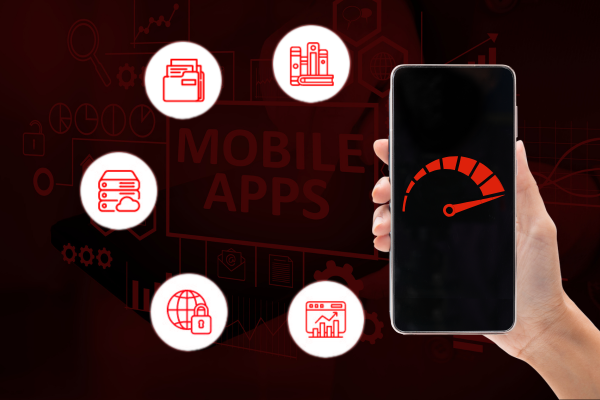
In today’s mobile-first digital world, users expect apps to open instantly. Even a delay of one or two seconds can feel slow, especially when customers have many app options available. Studies show that most users uninstall or abandon an app if it does not load fast enough. This is why reducing mobile app load time has become a top priority for development teams. For businesses, faster load times not only improve user satisfaction but also help increase conversions, engagement, and app ratings.
This blog explains clear and practical steps that software teams can use to bring mobile app load time below one second. Instead of using complex technical terms, we break down the process into simple, easy-to-follow points. Our goal is to help product owners, developers, and decision-makers understand how better engineering practices can lead to faster, smoother, and more efficient mobile apps.
Throughout this guide, we will also highlight our meta keyword, “mobile app load time,” to support search engine visibility. By the end of this blog, you will know the exact techniques you need to build apps that feel fast, responsive, and reliable — even on low-end devices or slow networks.
Why Load Time Matters in Modern Mobile Apps
The first impression of any app is created at launch. If the app loads slowly, users assume the entire experience will be slow. Fast loading improves:
- User trust
- App store ratings
- Session time
- Conversion rates
- Retention
Even small speed improvements create noticeable results. Reducing mobile app load time can increase engagement by up to 20–30%, especially in eCommerce, fintech, and service-based apps where speed directly affects sales and decision-making.
What Affects App Load Time?
Before you speed up an app, you need to understand what slows it down. Here are the most common reasons:
- Heavy app bundle size
- Large images or uncompressed media
- Running too many tasks on the main thread
- Slow API responses
- Inefficient database queries
- Unoptimized third-party libraries
- Too many permissions or background processes
Knowing these factors helps teams focus on the right improvements instead of guessing.
Reduce App Bundle Size
A lighter app loads faster — it’s that simple. Reducing the bundle size also helps users download updates more quickly. You can do this by:
- Removing unused libraries
- Using resource shrinking
- Compressing images
- Switching to vector graphics
- Enabling ProGuard or R8 for Android
- Using bitcode for iOS builds
A lighter bundle can improve mobile app load time instantly, especially on older devices.
Use Lazy Loading for Heavy Components
Lazy loading means loading only what is needed at startup. Heavy modules such as dashboards, analytics screens, and social feed components should load later.
This helps the app open quickly while background elements load silently without affecting the user experience. High-traffic applications like Kangrooo also benefit from this approach.
Optimize API Calls and Network Requests
Many apps take long to load because they wait for API calls. You can fix this by:
- Using caching
- Reducing the number of startup API calls
- Compressing JSON response
- Using faster backend queries
- Implementing offline-first logic
The faster the data loads, the smoother the experience. For apps with real-time or location-based features, better API performance can cut mobile app load time by half.
Improve Image and Asset Loading
Images are usually the heaviest elements in an app. To speed up load time:
- Compress images
- Use next-gen formats like WebP
- Load images in the background
- Use placeholders or skeleton screens
- Avoid loading full-size images at startup
Visual loading tricks such as skeleton screens improve perceived performance, making the app feel faster even while it loads content in the background.
Use Background Threads Wisely
Running everything on the main thread causes blocking. When the main thread is slow, the app feels slow — even if your code is efficient.
Use background threads for:
- Data processing
- API syncing
- Image processing
- Heavy calculations
- Permission checks
This ensures the primary interface loads immediately and responds smoothly.
Enable App Startup Profiling
Profiling helps you see exactly which part of the app is slowing down launch time. Tools like:
- Xcode Instruments (iOS)
- Android Studio Profiler
- Firebase Performance
- React Native Performance Monitor
- Flutter DevTools
Profilers show CPU usage, memory usage, and thread activity. With accurate data, you can remove bottlenecks rather than guessing.
Reduce Cold Start and Warm Start Times
There are two types of app launches:
- Cold start: App launches from scratch
- Warm start: App opens from background
To reduce cold start time:
- Minimize initialization code
- Delay non-critical services
- Remove heavy startup processes
To reduce warm start time:
- Maintain app state
- Use efficient state management
- Avoid destroying activities unnecessarily
These improvements directly affect mobile app load time during real-world use.
Use Caching to Speed Up Repeated Loads
Caching saves time by storing temporary data locally on the device. This reduces loading from network or database. Developers can cache:
- User data
- Product listings
- Images
- API responses
- Recent search results
This also helps users with weak connections get faster experiences.
Add a Lightweight Splash Screen
A splash screen does not technically reduce load time, but it improves the perception of speed. It gives the app time to initialize key components quietly in the background while showing a clean, branded loading view.
Conclusion
Reducing mobile app load time is not just a technical improvement — it is a business advantage. Fast apps create trust, build better relationships with users, and strengthen brand loyalty. In competitive markets, the apps that load the fastest often win the most customers. Slow performance, on the other hand, creates frustration and drives users to uninstall the app within seconds.
By using the strategies discussed above — such as reducing bundle size, compressing images, caching data, optimizing API calls, and moving heavy tasks to the background — development teams can bring launch times below one second. These techniques are simple, practical, and effective for both small apps and enterprise-level projects.
It’s also important to keep testing the app regularly with profiling tools. Real optimizations happen when teams understand how their app behaves on different devices, networks, and operating systems. Consistent monitoring allows developers to maintain high performance even as the app grows.
As a software development agency, delivering fast and reliable mobile apps is one of the best ways to support clients who expect smooth user experiences. A strong focus on reducing mobile app load time helps your team build apps that feel modern, trustworthy, and high-quality. When users enjoy the speed and performance of an app, they are far more likely to stay active, make purchases, and recommend the app to others.
In a world where every second matters, optimizing load time is one of the most rewarding improvements any development team can make. With the right techniques and consistent performance checks, achieving a load time under one second is not just possible — it is a realistic goal for every business that wants to stand out.
FAQs
- What slows down mobile app load time?
Heavy files, too many APIs, unoptimized images, and slow servers. - How can I reduce load time under 1 second?
Use caching, lightweight code, CDNs, and compress all media. - Why does load time matter?
Fast apps improve user experience and reduce uninstalls. - Does backend speed affect load time?
Yes, slow servers cause delays even if the app is optimized. - Can AI help improve load speed?
Yes, AI can auto-optimize code, images, and caching patterns.





